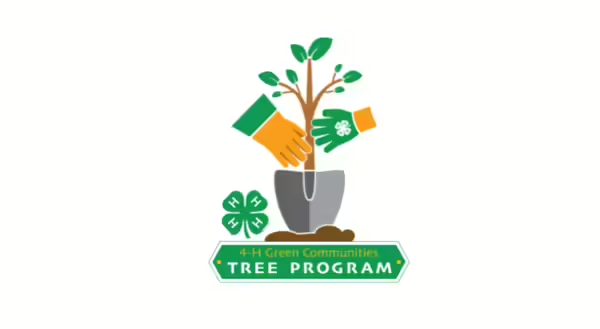
OK, I get it. We’ve changed our environment in ways that need immediate attention. So what can I do? We need to improve our water quality. Storm water runoff with too many nutrients needs reduced. We need to become “carbon neutral” by producing less CO2 gas and find more ways to absorb and hold (called sequester) these carbon molecules so they don’t get trapped in the atmosphere thus warming our planet. But what can I really do and how can I help demonstrate to others we all need to care? One good answer….plant a tree. Illinois 4-H is primed for action.
The Illinois Forest Action Plan 2020-2030 as prescribed by the Food, Conservation, and Energy Act of 2008, outlines in detail the benefits of trees to Illinois citizens. Simply put, more trees will move us to cleaner water, healthier soils, more animals and birds, higher biological diversity, and cleaner air. All things critical to people’s health and quality of life. What once was a state with 14 million acres of trees shrunk to only 3 million acres before efforts to reverse this trend began 50 years ago. Illinois now sits at 5 million acres of trees and there are important reasons to keep expanding. Every tree helps. Illinois 4-H is primed to educate.
Illinois 4-H and the Association of Illinois Soil and Water Conservation Districts are collaborating to implement a grant from the Illinois Forestry Development Council on a program entitled “4-H Green Communities Tree Program” which is a statewide, youth-oriented tree planting program focused on action, education, and conservation. This follows the “learn-by-doing” philosophy of 4-H and is guided by the priorities of the Illinois Forest Action Plan. Illinois 4-H is primed to listen and learn.
In the spring of 2022, 4-H youth in 31 counties in Illinois will plant 25 oak trees together in one group (called a savanna) on public property within their county. This small gesture will be visible to many and yet address the number #1 priority within the Illinois Forestry Action Plan which is that oak-hickory forests are threatened in Illinois. Illinois oak resource is characterized by large, mature trees and a comparatively small sapling/seedling component due to decreases in the frequency of “beneficial disturbances” such as fire and proper timber management. Oak savannas are being dominated by invasive species and also more shade tolerant trees such as maples. Illinois 4-H is primed to make change, one tree at a time.
To find out if your county is participating or how to support this initiative, contact your local Extension Office.
ABOUT THE AUTHOR: Curt Sinclair is a 4-H Youth Development Shooting Sports and Environmental Education Specialist with Illinois Extension. He received his B.S. in Forestry from Southern Illinois University in Carbondale in 1982 and his Master's in Recreation Resource Administration from North Carolina State University in 1988.